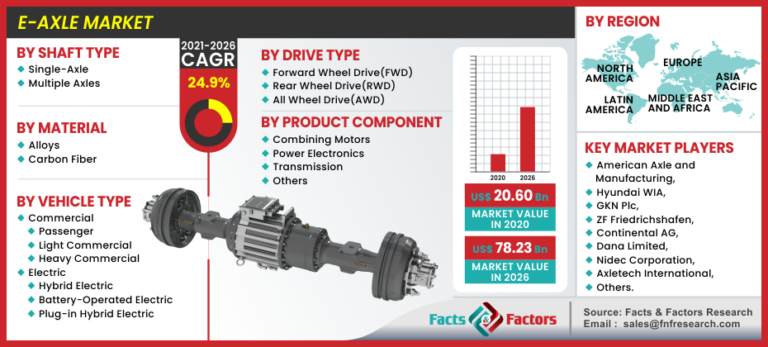An eAxle, or electric axle, is an integrated electric powertrain system primarily used in electric vehicles (EVs). It combines three essential components—an electric motor, power electronics, and a transmission—into a single, compact unit. This integration simplifies vehicle design, reduces the number of parts, saves space, and enhances efficiency, making the system lighter and more cost-effective[1][4][7].
Leading manufacturers like Bosch and Aisin are at the forefront of eAxle technology development. They focus on improving efficiency, reducing costs, and supporting the transition to electric mobility. These advancements contribute to extending vehicle range, reducing power consumption, and providing a more sustainable transportation solution[1][4][9].

An Electric Drive Unit (EDU) is a crucial component in electric vehicles that integrates several elements necessary for vehicle propulsion into a single system. These elements typically include an electric motor, power electronics (such as an inverter), and a transmission or gearbox. The primary functions of the EDU are to convert electrical energy from the vehicle’s battery into mechanical energy to drive the wheels and to manage the power flow and control signals between the motor and the vehicle’s battery and control systems[3][6].
eAxles and EDUs are integral to the advancement of electric mobility, offering compact, efficient, and versatile solutions for modern electric vehicles. As the automotive industry continues to evolve, these technologies will play a crucial role in enhancing vehicle performance and sustainability.
Manufacturers like Bosch, Aisin, and BorgWarner are prominent in the development of advanced EDUs, aiming to enhance the performance, efficiency, and scalability of electric vehicles.
An eAxle and an electric drive unit (EDU) are both essential components in electric vehicle (EV) propulsion systems, but they have distinct characteristics and applications.
While both eAxles and EDUs serve to drive electric vehicles, they differ in their design approach, integration level, and application flexibility. The choice between them depends on the specific needs and design goals of the vehicle manufacturer.
The terms “electric drive unit” (EDU) and “electric drive module” (EDM) are often used interchangeably in the context of electric vehicle (EV) technology, but there are subtle differences between them, mostly pertaining to the level of integration and specific components involved.
The distinction between an electric drive unit and an electric drive module lies mainly in the level of integration and modularity, with EDUs being more integrated systems and EDMs providing a more flexible, modular approach to vehicle propulsion systems.
[1]Bosch Mobility. (n.d.). eAxle. Bosch Mobility. Retrieved September 10, 2024, from https://www.bosch-mobility.com/en/solutions/electric-motors/eaxle/
[2]Exro Technologies Inc. (n.d.). EV power electronics: Purpose of key components. Exro Technologies Inc. Retrieved September 10, 2024, from https://www.exro.com/industry-insights/ev-power-electronics-explained
[3]Traxial. (n.d.). Modularity of integrated EDUs to power mass adoption of EVs. Traxial. Retrieved September 10, 2024, from https://traxial.com/blog/integrating-electric-drive-units-for-evs/
[4]Aisin Corporation. (2023, January 20). *The eAxle, a core component of electric vehicles [5 minute read]*. AI Think. Retrieved September 10, 2024, from https://www.aisin.com/en/aithink/innovation/blog/005822.html
[5]E-Mobility Engineering. (n.d.). *eAxle transmission*. E-Mobility Engineering. Retrieved September 10, 2024, from https://www.emobility-engineering.com/eaxle-transmission/
6. Hofer Powertrain. (n.d.). The core of e-mobility: Electric drive units. Hofer Powertrain. Retrieved September 10, 2024, from https://www.hoferpowertrain.com/articles/the-core-of-e-mobility-electric-drive-units [6]
[7]S&P Global Mobility. (n.d.). eAxle and electric motor drive EV evolution. S&P Global Mobility. Retrieved September 10, 2024, from https://www.spglobal.com/mobility/en/research-analysis/electric-motors-eaxles-growth-trends.html
[8]AVL. (n.d.). E-axle system. AVL. Retrieved September 10, 2024, from https://www.avl.com/en/engineering/e-mobility-engineering/electric-driveline-development/e-axle-system
[9]AI Online. (2024, May). BorgWarner showcases latest advances in e-mobility drivetrain technology. AI Online. Retrieved September 10, 2024, from https://www.ai-online.com/2024/05/borgwarner-showcases-latest-advances-in-e-mobility-drivetrain-technology/
Always verify flow calculations by experiment.
*There are many parameters to consider when determining V-Factor. Click here for more information.